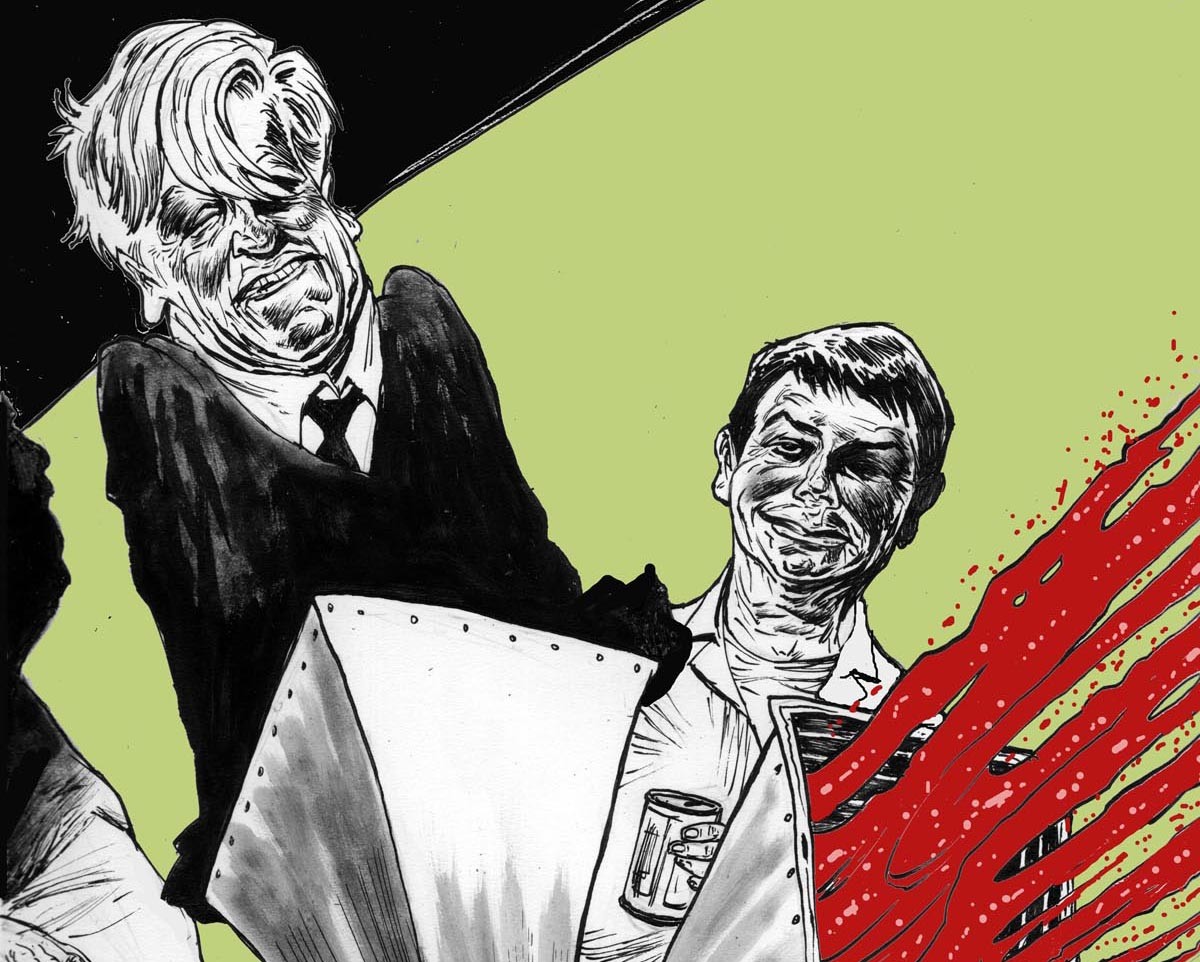
Arranging a series of gruesome assassinations required not only patience, but also careful planning and execution, John Arthur Walthall advised confidante Antonio Rodriguez on June 3, 2014, while the two inmates sat by tree stumps inside the recreation yard at the Federal Correctional Institution at Lompoc. To remain “insulated” from potential “blowback” for killing “high-value targets” in Orange County’s judicial system, the plot risked having a drone drop a Blackberry cellphone over the prison fence without alerting guards. They also discussed purchasing voice changers from Sharper Image, using encryption platforms, and developing impenetrable codes for communications with an outside intermediary who’d manage professional killers, preferably from Colombia. La Habra Heights’ Walthall, a quirky white-collar swindler, told Rodriguez, a narcotics trafficker, he’d researched home addresses for targets they’d have kidnapped, tortured and murdered. “What I envision,” Walthall said with authority, “sounds fucking crazy. . . . Start with the judge . . . Guilford.”
Born in Santa Monica in 1950 to a working-class family, Andrew J. Guilford is now one of Southern California’s legal giants. The UCLA Phi Beta Kappa became a prized business-litigation lawyer based in Costa Mesa, volunteered for numerous charitable efforts and received at least 20 honors for his work. He represented the city of Anaheim in its losing complaint against Arte Moreno for changing the name of his team from the Anaheim Angels to the Los Angeles Angels of Anaheim in 2005, but he became a folk hero in the process. The following year, President George W. Bush nominated Guilford, a Republican, to become a U.S. District Court judge. After the American Bar Association blessed his selection with its highest rating, the Senate confirmed the lifetime appointment in a 93-0 vote. He is one of five judges who preside inside Orange County’s Ronald Reagan Federal Courthouse, a 10-story, Art Deco-style glass-and-marble edifice that dominates Santa Ana’s skyline.
It didn’t take long for Guilford, a sports enthusiast with a gregarious disposition and an encyclopedic mind, to establish his character. In a one-party locale where top officials have long tolerated public corruption, Guilford stepped up in April 2009. That’s when he spent 28 minutes voicing his disgust with a sensational criminal defendant: Sheriff Mike Carona, once the most popular Republican in the county, a pal of then-Governor Arnold Schwarzenegger and a wannabe lieutenant governor who was convicted of trying to sabotage a federal grand jury investigating felonious hanky-panky inside the Orange County Sheriff’s Department. A smirking Carona anticipated he’d get wrist-slap punishment such as probation.
“This is a very serious offense,” a stern-faced Guilford told the felon before sending him to prison for 66 months. “I do believe the victim in this case is our community and the criminal-justice system. . . . Lying won’t be tolerated in this courtroom.”
Behind the scenes at that moment, the FBI had unwittingly set in motion the impetus for the Lompoc plot to kill the judge by wrapping his body in plastic and feeding him feet first into an industrial wood chipper.
* * * * *
From his earliest memories, Walthall failed at social interactions under his birth name, Arthur John Haas. The Buffalo, New York, native, who claims a doctor’s forceps disfigured his nose during his 1955 birth, couldn’t figure out why his classmates mocked him. “I had to hide a lot,” he recalled in a 2012 diary entry. He was, he said, “like a near-sighted person without a map, forced to involuntarily drive while colorblind, attempting to navigate busy intersections unable to discern signals and social cues others may take for granted. Is [the traffic light] green? Red? Or yellow to go slow?”
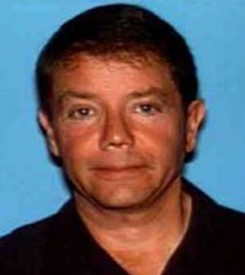
Because of his “autism,” Walthall called himself “an accident waiting to happen,” regardless of his intentions. “This is what I’ve experienced my whole life,” he wrote. “I normally have always been friendly, abhorred violence, vulnerable, a timid science nerd, easily overwhelmed, continuously puzzled, always studying and longing to fit in.”
To find safety growing up in the Oakland area in the 1960s, he fled to public libraries, routinely spending hours there alone. At the ages of 6 and 7, he devoured a Winston Churchill biography, as well as Greek and Roman mythologies. In 1963, his mother, Gilberta Lee Trujillo, married Alister Walthall, and he adopted his stepfather’s name. There aren’t many stories about his parents, but he blames their second-hand smoke for his asthma.
Despite his ailments, Walthall graduated from Dublin High School at the age of 17 and found a job as a night janitor while he attended the Bay Area’s Chabot Junior College. In 1976, he worked to improve his social skills by enrolling in the Dale Carnegie sales-training school. He struggled, taking the course three times. That year, he also landed his first job in finance with Prudential Insurance Co.
Walthall climbed the career ladder in the insurance industry during the next decade and, in 1986, got married before opening a stock brokerage in Danville. Living comfortably, he and his then-wife raised four kids. In his time line, the 1989 junk-bond crisis on Wall Street prompted him to opine that the world’s currency systems were controlled by the Illuminati, the legendary secret society formed in 1776. Fearful of a Great Depression worse than the one in the 1930s, he believed gold possession equaled financial stability. By 1996, he actively pursued creating technology to find the precious matter in abandoned Nevada mines. Walthall also sought wealthy investors, moves that landed him under arrest in November 2009 and in Guilford’s courtroom.
* * * * *
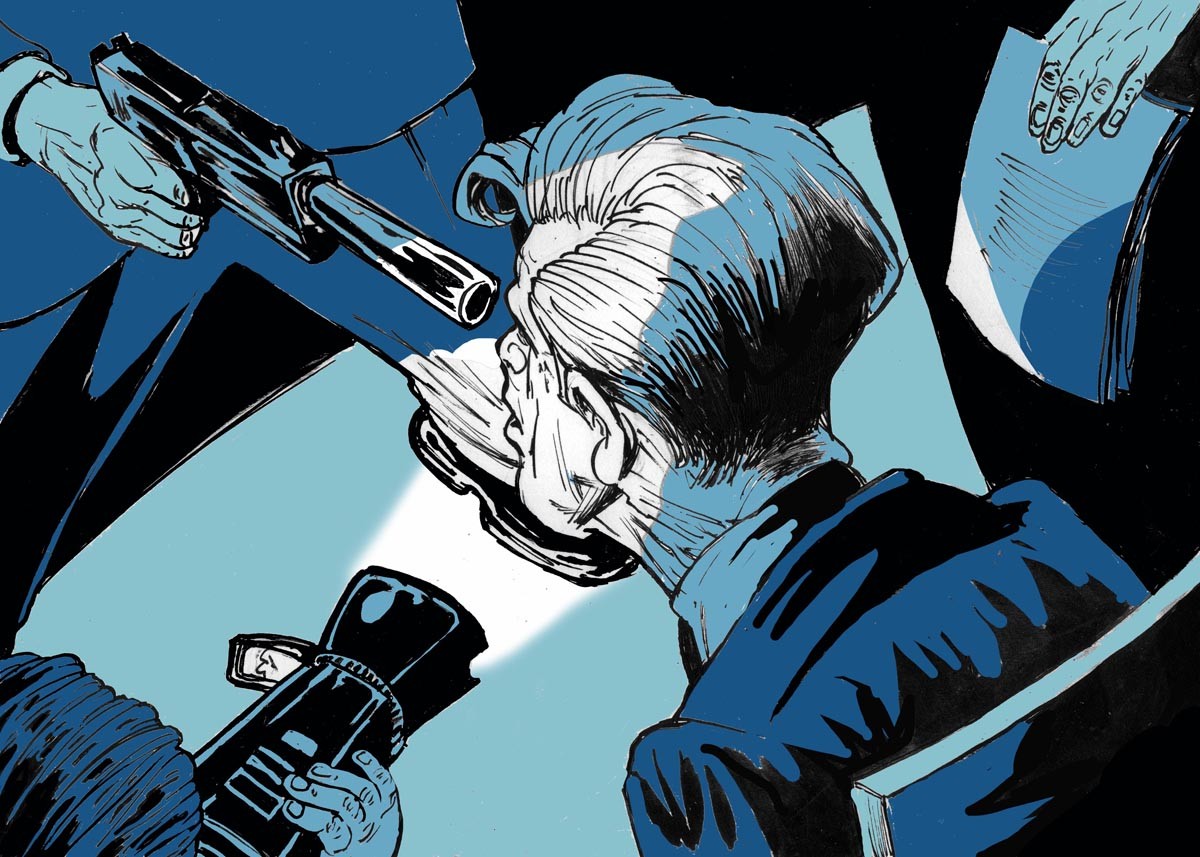
In Joel and Ethan Coen’s 1996 award-winning film, Fargo, a bizarre kidnapping/ransom plot created by a money-hungry Minnesota car salesman ends in disaster. The most memorable scene happens when one of the plotters, a deranged hit man who feels double-crossed, feeds the body of a co-conspirator, played by Steve Buscemi, into a wood chipper. It’s unknown if the scene inspired the real-life plot against Guilford.
We do know his would-be killers were to study the judge’s habits and determine the best chances for taking him without causing a public spectacle. They’d handcuff and toss him into the back of a Ryder rental truck after an ambush with handguns and stun guns. Because of a suspicion that U.S. marshals implant federal judges with tiny GPS tracking devices beneath their skin, the plotters thought they had no more than 40 minutes to perform all of their tasks.
According to the plan, Guilford would be forced to confess on video that he was part of a conspiracy to convict innocent defendants and steal their assets, that he felt ashamed of his deeds, and that he was fleeing to either Russia or Brazil. After uploading the footage to the Internet for worldwide consumption, the killers devised secondary insurance. They’d make the judge sign 10 affidavits outlining his crimes so he wouldn’t be able to use a botched signature. Bed sheets hiding the walls of the constantly moving Ryder truck would confuse Guilford’s potential rescuers about his whereabouts, they assumed. The final stage: rendezvous the judge with the wood chipper, first cutting out one of his eyeballs as a souvenir, and dumping ammonia to mask the bloody crime scene.
* * * * *
Nearly a decade ago, Walthall proved the notion of an individual getting rich quick from gold mining hadn’t died a century and a half after the height of California’s historic rush. He worked on building his own water-to-oxyhydrogen (HHO) generator connecting to an 8,000-degree torch to recover sizeable quantities of gold more traditional mining systems had failed to locate in already-explored mines. At Walthall’s request, Kansas-based businessman/scientist Terry Galyon built a prototype and acknowledged his initial doubts were unfounded. Galyon believed Walthall had thoroughly researched the project.
According to court records, a private detective interviewed the businessman in 2012 and observed, “The process envisioned by Walthall would pass ore containing amounts of metal too small to be collected by conventional mining under the HHO torch, which would superheat and melt metal deposits while shattering the rock ore. The molten metal would then drip through to a water trough where the metal would re-harden and be collected as small spheres similar to BBs or lead shot.”
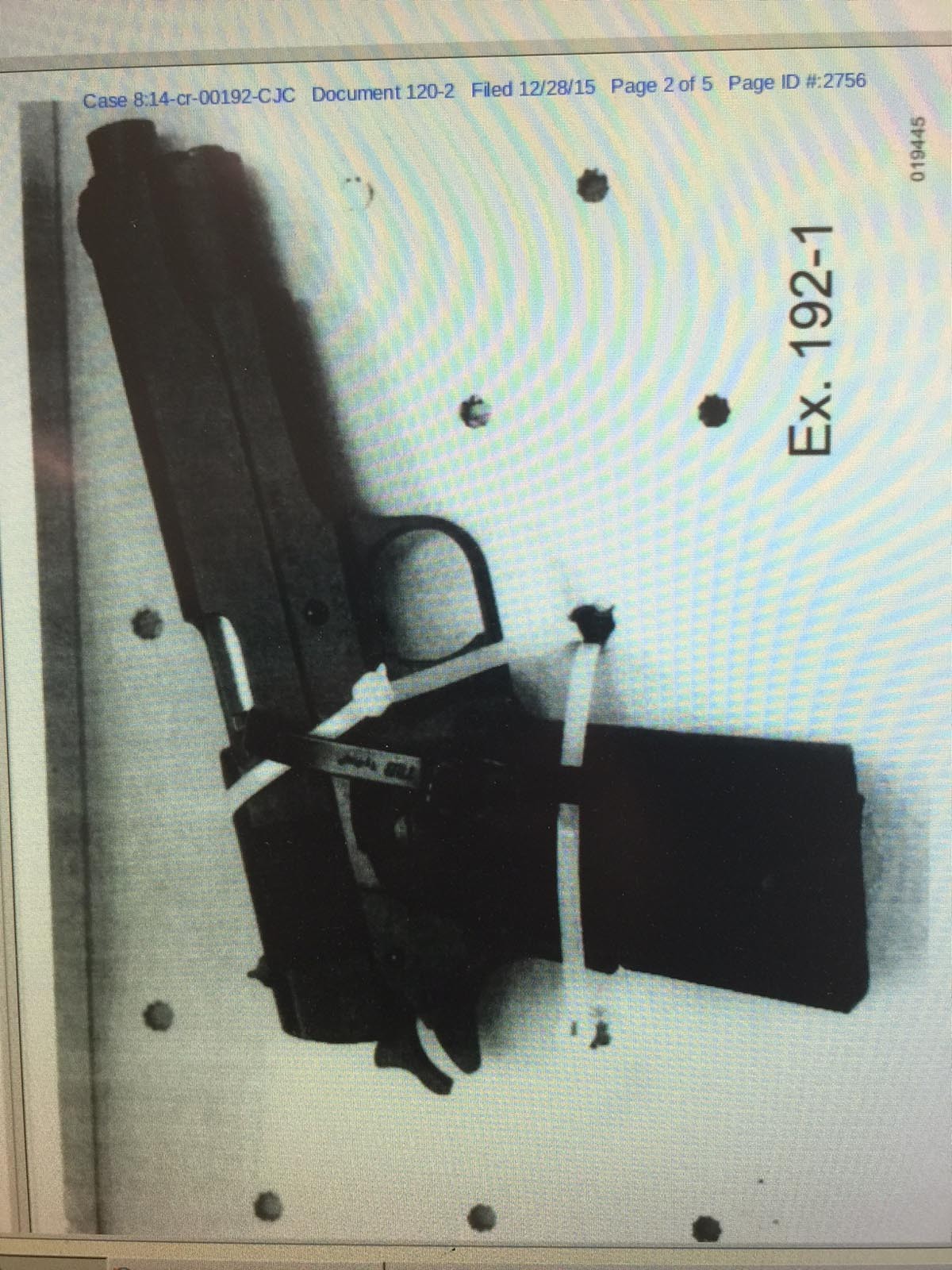
In 2006, Walthall—who owes monthly child support and nearly a quarter of a million dollars on a loan—advertised his financial services in a magazine, attracting the interest of Tony and Mary Ganje, a wealthy Dana Point couple in their eighties and in declining health. He soon told them he considered them his parents. In early 2007, the three created the gold-mining partnership Advanced Recycling General Partners, an operation totally funded by a series of checks totaling $5.5 million from the couple. An FBI report obtained by the Weekly describes a “persistent” Walthall showering attention on the Ganjes—even calling once from San Diego to claim he was working with Navy SEALs and training in martial arts to protect the alleged mining operations.
Meanwhile, without the couple’s knowledge, Walthall funneled the couple’s money into dozens of bank accounts and paid his personal living expenses, which included credit-card debts, maid service, a 52-inch flat-screen TV, rent, a trip to Australia, dinners, a clothes dryer, alimony to his ex-wife, salon services, gifts for family members and a girlfriend, New York film-school tuition for his son, three vacuums, clothes, several dozen Amazon book purchases such as Secrets of Seduction for Women, $15,000 on firearms training, a sexy Snow White Halloween costume, hair extensions, plane tickets, a hyperbaric oxygen chamber, and $9,000 on gas in one year alone.
The scheme lasted nearly two years because the couple was unaware alleged periodic proceeds from the gold mining were in reality part of their original investment, according to the FBI. In the fall of 2008, the Ganjes began to doubt Walthall’s veracity. A Wells Fargo account that should have contained $2 million had been quietly emptied except for $16,000.
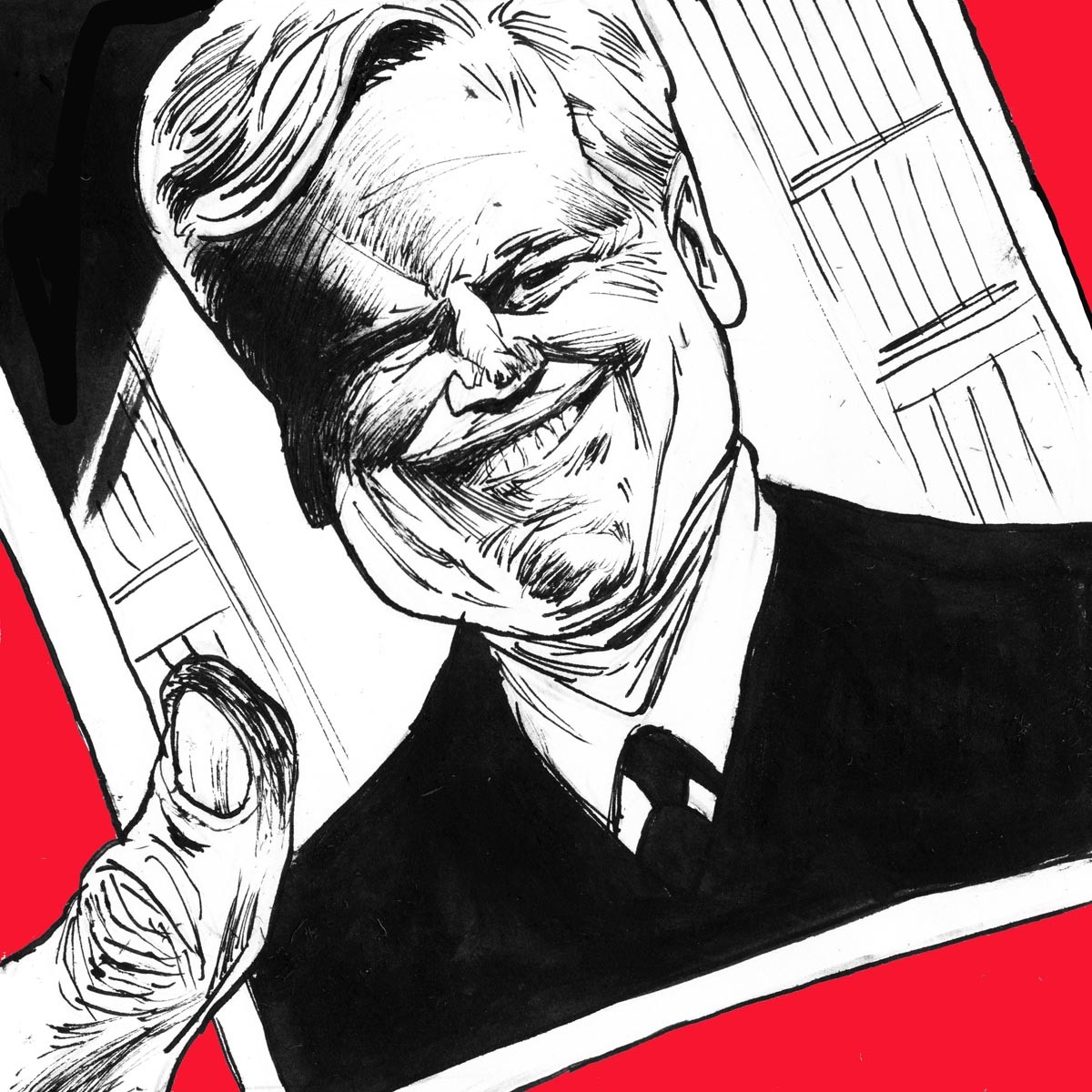
The couple filed a lawsuit in Orange County Superior Court and won a civil settlement of $670,000 from Walthall, who denied any wrongdoing and erroneously assumed the matter had concluded. However, the FBI, federal prosecutors and a grand jury believed his actions constituted wire fraud and money laundering. After his 2009 arrest and while out of custody on $500,000 bail, Walthall repeatedly sought to stall the case by claiming serious medical conditions had rendered him unable to function mentally or physically. Dramatically gasping for air each time he spoke, he said he needed at least 18 months until he was capable of assisting in his own defense. Doctors at Hoag Hospital believed he’d snorted crushed Tylenol capsules to fake symptoms.
Weeks later, four undercover FBI agents—Tony Alston, Jessie Murray, Brad Howard and Candace Corte—documented the charade. They photographed Walthall driving himself, walking the lengths of several football fields without aid, pushing another man in a wheelchair, loading the wheelchair into a car, smiling, dining at BJ’s Restaurant and Brewhouse during an hour-and-a-half lunch, and talking easily on a cellphone. During the period, he also used an associate’s name to purchase three .45-caliber handguns, extra barrels and a fake silencer.
On June 21, 2011, prosecutors filed a motion to revoke his bail. The next day, Guilford ordered him to appear for a June 27 hearing. Walthall fled and adopted an alias, Art Langford. When law enforcement (using GPS tracking) captured him on Interstate 15 in Mesquite, Nevada, on July 27, he possessed seven cellphones, one of his guns, pepper spray, a handcuff key and the book How to Be Invisible. Arresting officers heard him whine about his decrepit health.
At trial, Walthall’s defense included assertions that the mining plan hadn’t been given enough time to succeed, the Ganjes signed off on his actions and his spending complied with the partnership agreement. As the court clerk announced each of the five guilty verdicts on Dec. 11, 2011, the defendant couldn’t remain silent.
“No,” Walthall said. “No, no, no. I’m not guilty. Oh, no. No. You’re wrong! I didn’t do this!”
Guilford replied, “The jury has spoken. Under our system, this is how we determine these types of questions. I again commend counsel for both sides, and the jury is now discharged. We are in recess.”
Walthall, who has lived in Laguna Beach, kept talking as the jury left the courtroom. “I didn’t do this,” he said. “I didn’t do this. Congratulations, you get to destroy somebody who is innocent.”
Officials in the U.S. Probation Office recommended a punishment of 11 years in prison. However, the Department of Justice (DOJ) officials labeled the 57-year-old Walthall a “pathological liar” prone to target vulnerable victims. They produced a 2006 binding-arbitration settlement that outlined how he committed deceptive practices to swindle hundreds of thousands of dollars from a different elderly couple: the Millers, ages 86 and 89. Prosecutors Ivy Wang and Mark Takla pushed for a term of nearly 20 years. James Riddet, the defense lawyer, argued the Ganjes disingenuously played suckers and suggested a sentence of no more than five years. Guilford settled on a term of 14 years, plus $2.5 million in restitution.
There are differing views about what happened next. Nobody questions the hostility Walthall felt for everyone involved in his case: the judge; assistant United States attorneys Wang and Takla; FBI agents Howard and Frank Bernal; his own defense lawyer, Riddet; and Riddet’s Newport Beach law-firm partner at the time, Al Stokke. But did Walthall mastermind the assassination plots that followed his sentencing?
This past spring, a jury couldn’t agree on the answer.
* * * * *
Law enforcement’s use of jailhouse informants is a valid, crime-fighting tool. Snitches help the government win difficult cases and often garner rewards such as cash, jail perks and sentence reductions. If not properly monitored, that system can be gamed. Desperate inmates have been known to fabricate information, most commonly claiming they obtained a confession.
Relaying an alleged confession to, say, a robbery might mean extra phone or recreation time. Relaying an alleged admission to murder likely means cash and reduced punishment. On this market, exposing an assassination plot against five federal officials is hitting the figurative jackpot.
According to Timothy Scott, Walthall’s San Diego-based defense lawyer who won the hung jury, two wily Lompoc inmates—Antonio Rodriguez and Crisanto Diego Trejos—planted the mass killing idea with his increasingly unhinged client, then notified authorities, claiming to be heroes preventing a disaster by supposedly solving their own devious creation. Scott told a second jury in July that Rodriguez, a cocaine and methamphetamine dealer serving a 30-year sentence, and Trejos, serving a term of 15 years for illegally trafficking high-powered rifles to Colombia, were calculating liars routinely looking for ways to win punishment reductions. The government concedes both men worked as paid snitches while also committing crimes.

To bolster his assertion that Walthall had been set up, Scott summoned two other Lompoc inmates convicted of running financial fraud schemes: Henry Jones and Glenn Bosworth. Jones testified that Rodriguez and Trejos approached him first with the idea of plotting to kill the judge in his case. The duo then suggested the idea to Bosworth, who also rejected it as nuts.
Scott says Rodriguez and his pal found the perfect “mark” in their third target: Walthall, described by fellow inmates as “a loner,” “odd,” “a nut,” and “an outcast” who was often ridiculed. “Rodriguez and Trejos enjoyed getting [John] going [about his government conspiracy theories],” Scott said. “They would laugh at him, and then one day, the light bulb went on. . . . They mixed their judge scam into his delusions. They nursed the flames of his anger.”
Jones alerted a prison official. “I said, ‘These men are trying to frame an innocent man,'” he recalled. ‘It’s a set up.'” But the official told him to mind his own business.
Bosworth advised jurors, “This was a big entrapment scam. . . . [In prison,] you are either predator or prey. Mr. Walthall was prey.”
According to Scott, Rodriguez and Trejos “pressed” Walthall for months to memorialize their plot in writings. They then contacted Trejos’ sister, a Los Angeles Times advertising representative, who tipped off the FBI’s Howard. The defense lawyer labeled the informant’s incriminating statements against his client as “testimony for hire.” He also predicted the rats will win “Christmas presents” in the form of early release in coming months.
* * * * *
Given the seriousness of the assassination plot, FBI agents in Orange County, already aware of Walthall’s violence-themed rants, went on high alert. In 2012, a Santa Ana Jail snitch claimed Walthall, then awaiting sentencing in his wire-fraud case, wanted the Aryan Brotherhood to spray machine-gun bullets at the Ganjes and his ex-girlfriend after Molotov cocktails drove them out of their homes. Agents focused on Lompoc maneuverings gave Rodriguez a recording device to wear in the prison yard. Walthall’s voice was firm as he complained that Guilford had “rigged up the [court] system” in a conspiracy with the Catholic Church, FBI, federal prosecutors and criminal-defense lawyers. To expose that corruption, he wanted another “Rampart” scandal that would free hundreds, if not thousands, of wrongly convicted inmates, such as himself.
“I’m going to have [Guilford] admit, confess [on video] that he was picked as a federal judge because he’s corrupt,” Walthall stated. “Then I’m going to kill him. I want him shoved feet first in a fucking wood chipper. I want his eye cut out of his head, so then we can see eye to eye. . . . Next, I want to take out the agents, Brad Howard and Frank Bernal.”
After saying he wanted Howard’s father, wife and son killed, too, he named prosecutors Wang and Takla as wood-chipper targets. “I want to kill them and make their bodies disappear,” he said. “The only thing that pisses me off is treachery.”
Rodriguez asked Walthall if he understood the “magnitude of this” plan.
“Yes,” he replied. “It’s war.”
Before he finished, he added, “The Illuminati, it’s real. . . . The ones who run the show are the Masons, the Illuminati.”
“Okay, John,” a dismissive Rodriguez said.
Three weeks later, Walthall met “Juan,” a Lompoc visitor Rodriguez claimed was his cousin, an underworld figure who could supervise the Colombian killers. But the man was undercover FBI agent Manuel Rodriguez (no relation). In a rambling, three-hour session, the defendant claimed a $100 million net worth and anticipated the murders would cost $10,000 for operational equipment, plus another $5 million each for the killers. He said, “[Antonio Rodriguez] and I have talked this over for more than a year.”
Near the end of the discussion, a chatty Walthall grew solemn before uttering, “If you are an FBI agent, I just committed suicide by talking to you.”
* * * * *
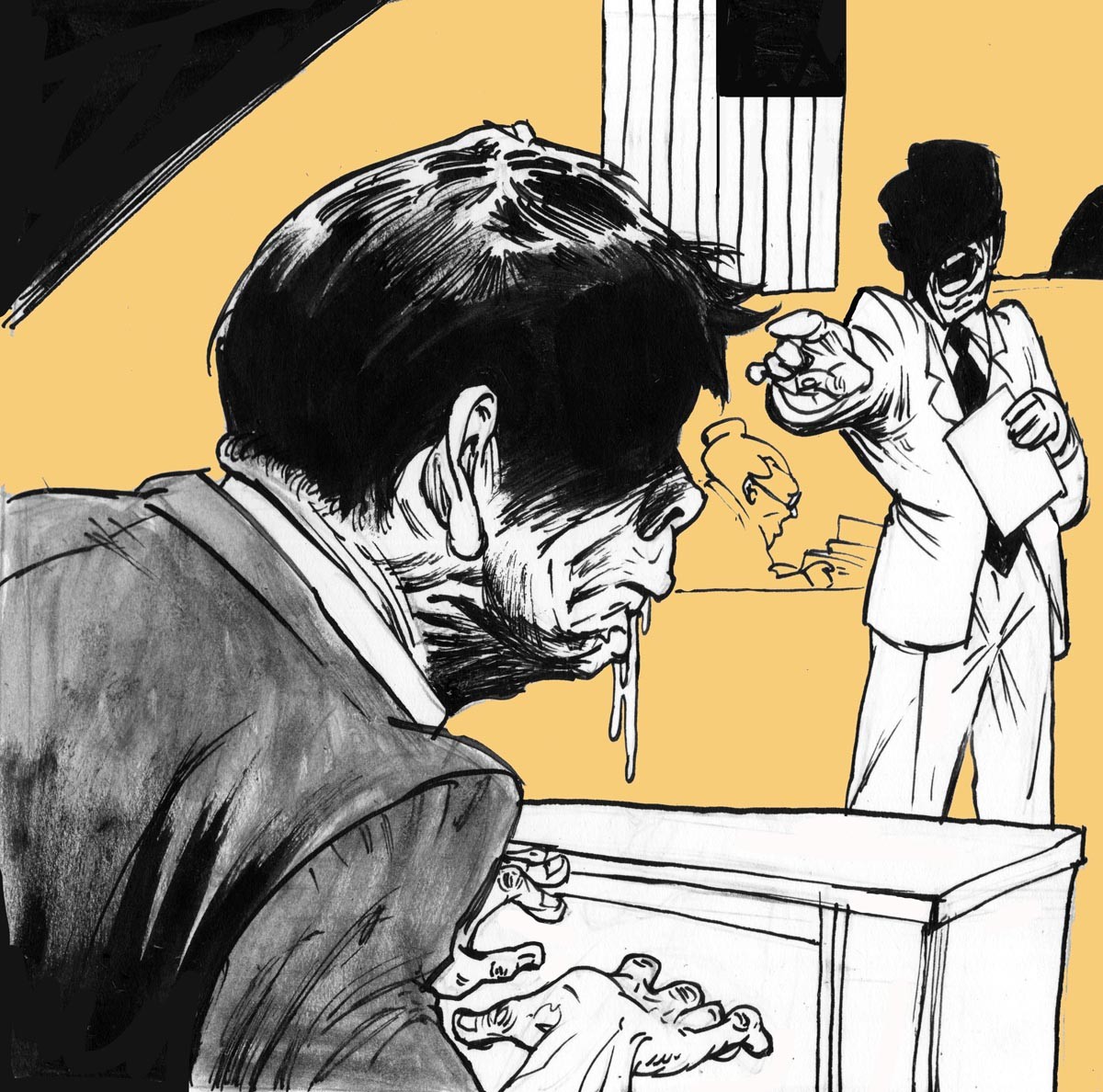
Slouched in a wheelchair at the defense table during the July retrial, Walthall stared at jurors and spectators day after day. At other times, his eyes darted around the room as though he heard voices coming from different directions. On more than a dozen occasions, he complained to his lawyers, snorted, rocked his head and muttered. To rationalize the prison-yard recordings, he insisted on the witness stand he’d known he was being taped and had concocted a wild, implausible revenge tale as code for future investigators unraveling how Rodriguez and Trejos forced him into the scheme.
“I was extorted to do these things,” he said. “My throat has been cut. . . . I’ve been defamed.”
Assistant U.S. Attorney Fred Sheppard made no secret of his contempt for the defendant, conceding in his opening statement that Walthall’s views were “at times nutty.” When Scott echoed that sentiment while describing his client’s “absolutely crazy” delusions about the NSA, Opus Dei, Star Wars, Edward Snowden, light sabers, Ron Paul, the Archdiocese of San Bernardino and the Illuminati, the defendant leaned into a microphone. “Enough of this!” he said. “You don’t represent me. I terminated this man.”
U.S. District Court Judge Cormac J. Carney told Walthall to be quiet.
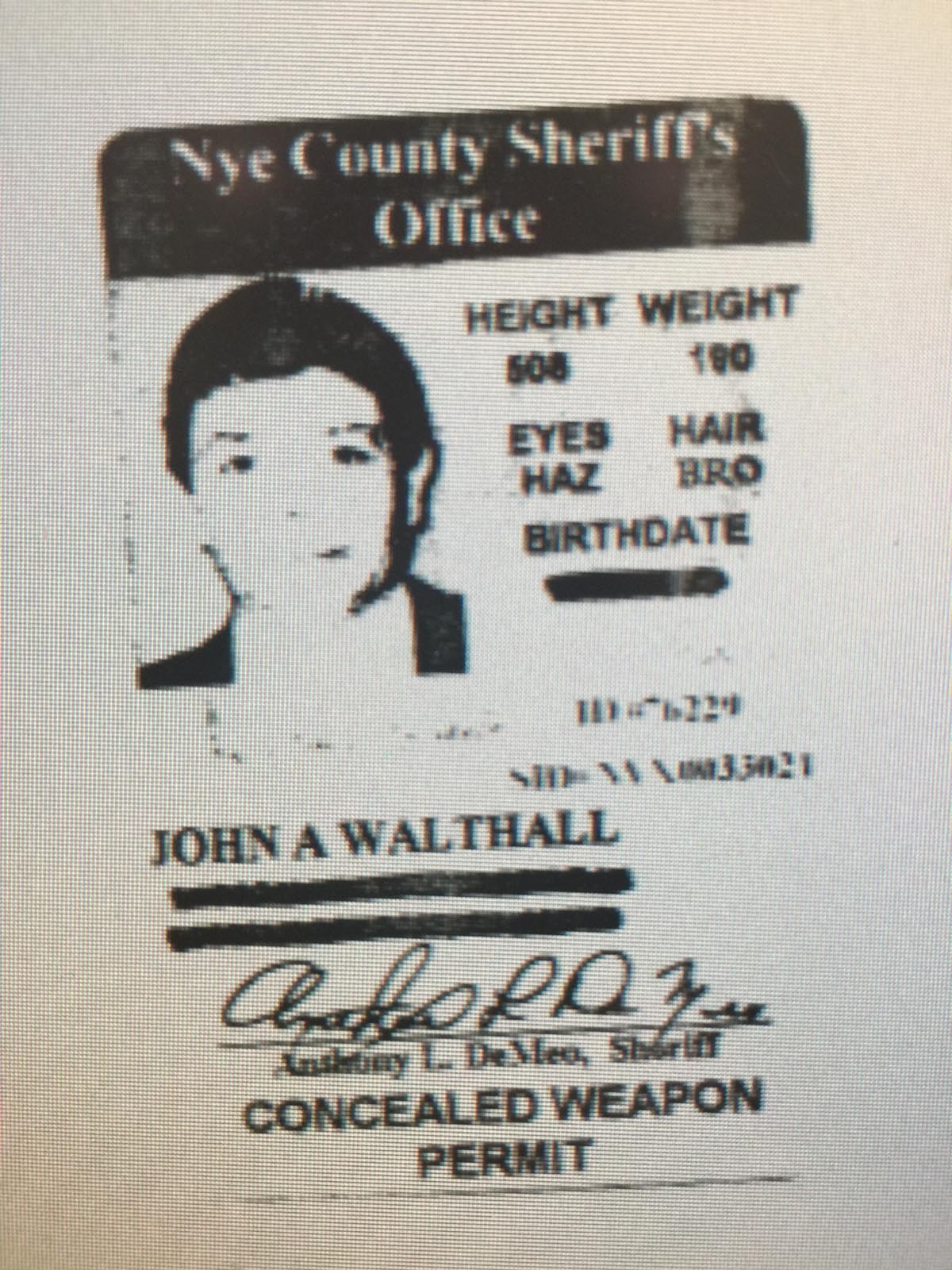
He refused, adding, “This is a false defense” before he was temporarily removed to a cell until he calmed down.
Jurors looked shocked. Sheppard, his DOJ colleague Adam Braverman and FBI agent Steven Wrathall smiled knowingly. Reporters wondered if the scene had been a sneaky way to support an insanity or diminished-capacity defense.
In his final argument, Scott—who solicited inmate testimony that his client regularly spent “hours” shaving until his face bled, defecated in his pants if he wanted a cellmate relocated and wore all of his clothes at the same time, regardless of hot weather—confronted the ruse issue, asking, “If somebody’s trying to pretend to be crazy, why work [at] cross purposes with your attorney?”
But Braverman reminded jurors that Walthall took several college courses at Lompoc and belonged to a book club. Also, no government experts who’d interviewed him found serious mental illness. “Everything this defendant does is with purposeful intent, including the outbursts in court,” the prosecutor said. “The only disease he suffers from is the disease of revenge.”
The second jury agreed, taking only about two hours to issue unanimous guilty verdicts. Walthall’s temporary home will remain the Santa Ana Jail. On Oct. 11, Carney is scheduled to announce punishment.

CNN-featured investigative reporter R. Scott Moxley has won Journalist of the Year honors at the Los Angeles Press Club; been named Distinguished Journalist of the Year by the LA Society of Professional Journalists; obtained one of the last exclusive prison interviews with Charles Manson disciple Susan Atkins; won inclusion in Jeffrey Toobin’s The Best American Crime Reporting for his coverage of a white supremacist’s senseless murder of a beloved Vietnamese refugee; launched multi-year probes that resulted in the FBI arrests and convictions of the top three ranking members of the Orange County Sheriff’s Department; and gained praise from New York Times Magazine writers for his “herculean job” exposing entrenched Southern California law enforcement corruption.

